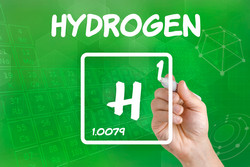Nanotechnology to boost hydrogen storage
One of the biggest hurdles for unveiling carbon-free vehicles that are powered by hydrogen remains finding a material capable of storing enough hydrogen. Unfortunately, neither compressed hydrogen gas nor liquefied hydrogen is likely to be capable of sufficient volumetric density. The EU-funded project NANOHY(opens in new window) (Novel nanocomposites for hydrogen storage applications) produced theoretical modelling, synthesis, characterisation and testing of novel nanocomposite materials for hydrogen storage. It combined the latest developments in metal hydrides – compounds that bind hydrogen and release it upon heating – with novel concepts for tailoring material properties. Experimental work was geared towards integrating metal hydride nanoparticles into nanocarbon templates that served as scaffolds to form nanocomposites. Cryo-infiltration was one of the novel methods employed for preparing such composites. Scientists improved properties such as working temperature and pressure, ease of reversibility of binding, and interaction between hydrides and the environment for enhanced safety. Coating hydride nanoparticles into self-assembled polymer layers or encapsulating them in polymer shells provided stability and protection against oxidation. NANOHY introduced sophisticated methods such as inelastic or small-angle neutron scattering for investigating nano-confined systems. Scientists demonstrated for the first time nanodispersion of complex hydrides into a microporous carbon scaffold. Magnesium hydride, amongst the best-studied metal hydrides, was shown to exhibit modified thermodynamic properties when incorporated into the porous carbon supports. Scientists concluded that these thermodynamic effects are restricted to reversible hydrides and particles with sizes less than 2 nm. Finally, researchers successfully scaled up nano-confined hydrides and incorporated them into a laboratory test tank with promising results – a real breakthrough in the difficult problem of hydrogen storage for a hydrogen economy. The hydride nanoparticle demonstrated excellent cyclability, eliminating the need for a catalyst. Twenty hydrogenation/dehydrogenation cycles were performed. Except for hydrogen storage, other areas could benefit from NANOHY research, such as development of battery materials with higher storage capacities, better safety and improved cyclability. The project disseminated its findings in several publications and at conferences and workshops.







